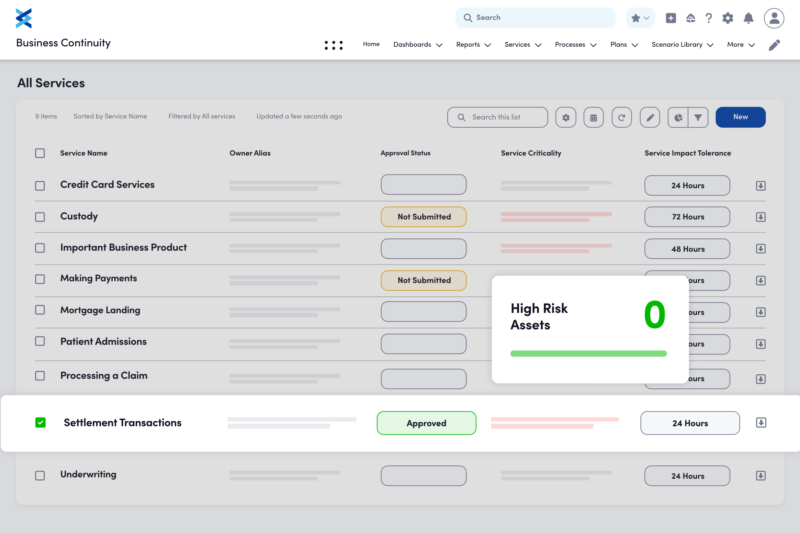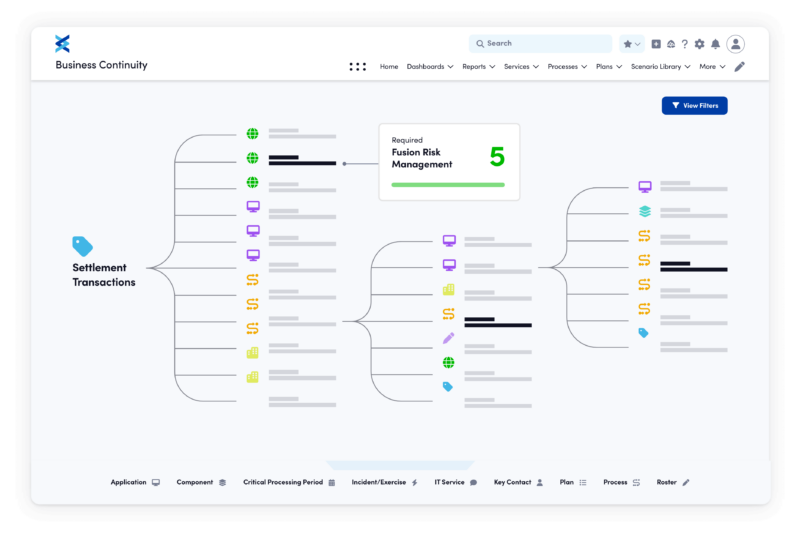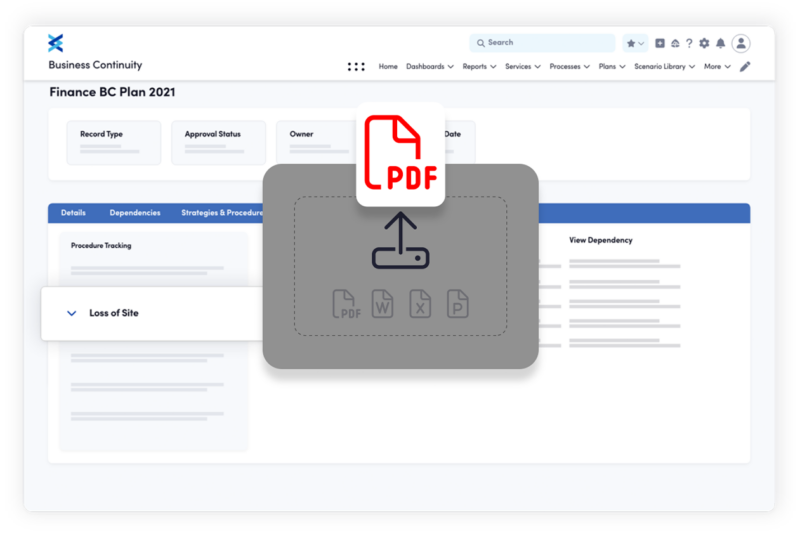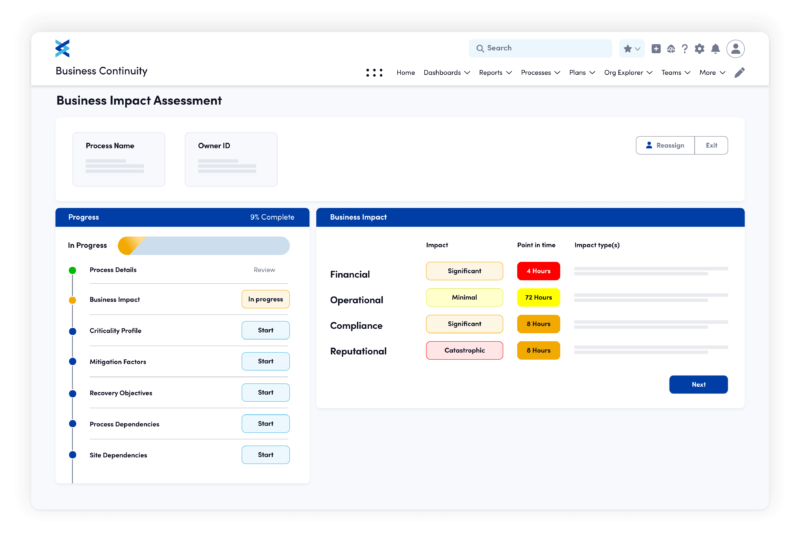Four Ways to Enhance Your BIAs
Learn about the four ways in which you can enhance your BIAs (business impact analyses) and make the process of performing them easier.
Read More
A business impact analysis (BIA) is the process of determining the criticality of business activities and associated resource requirements to ensure operational resilience and continuity of operations during and after a business disruption.

A business impact analysis (BIA) helps identify which functions, processes, and assets (e.g., people, systems, and vendors) are most critical to your organization. It examines the potential impact if those functions are disrupted, how long you can tolerate that impact, and what dependencies and vulnerabilities exist. Ultimately, a BIA helps prioritize recovery strategies and allocate resources to ensure timely restoration of operations.

A business impact analysis (BIA) is typically conducted through surveys and interviews with process owners to identify critical business functions, required resources, and dependencies. Teams gather data on the impact of disruptions, establish recovery time objectives (RTOs), and assess the vulnerability of supporting assets like systems, vendors, and facilities. Additional inputs like process maps and documentation reviews help ensure a complete understanding of operational risks, enabling prioritization of recovery strategies.

The information gathered from surveys and interviews may be insightful, but it needs to be validated. To make certain that a business impact analysis (BIA) reflects reality, a team can review past disruptions, run “what-if” simulations, or conduct tabletop exercises. This verification step is crucial, as it’s easy to be overly optimistic about recovery scenarios.

A successful business impact analysis (BIA) requires the participation of those who best understand your company’s operations. Department heads and team leaders are essential because they have a thorough understanding of their groups’ day-to-day functions, dependencies, and limitations. IT, facilities, and procurement often play critical roles as well. Your business continuity or risk team will likely be responsible for leading your BIA, but cross-functional participation is key to producing well-rounded, reliable results.

After your initial full-scale business impact analysis (BIA), you can shift to a review-and-refine approach for subsequent analyses. These should happen at least once every year, but if it has been 2-3 years since the last full-scale BIA or your company undergoes significant changes you should follow those changes with a new BIA review. The accuracy of your analysis will directly affect your ability to respond to a crisis, so it’s crucial to keep it current.
Learn about the four ways in which you can enhance your BIAs (business impact analyses) and make the process of performing them easier.
Read More
It’s never been easier to make your BIAs what they need to be: accurate, informative, strategic, and dynamic. Fusion can get you there.